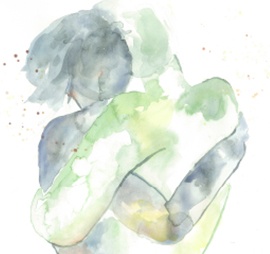I would venture to say that every human being on the planet knows what it is like to feel stressed. For some, it may be a few fleeting moments, triggered only perhaps by extreme circumstances. For the large majority of others, stress can be a lot more than just a passing feeling, and too often its left to get to the point where it can become incapacitating.
It’s pretty easy to say to someone “just relax”, or “don’t let yourself get stressed out about this”, and it would be hard to say something less helpful. Stress is a part of life. On a positive level, it allows us to identify when we may be in danger or threatened, and can help boost performance in response to a challenge. Of course the negative side is broad and multifaceted; in a constant state of stress our body defenses start to wear down, become less efficient in reacting to situations, and we just generally start to feel un-well.
It is extremely important to pay attention to your body and realize when stress could be causing you harm. Any physiological effect of stress (say a loss of appetite, nausea or diarrhea, disturbances in sleep, or feelings of tightness or flutters in the chest), is a pretty good indicator that stress is taking a toll and needs to be attended to. There are many things you can do to combat stress and anxiety, what I generally tell my patients is to ensure they are taking time for themselves, pursuing the things they love to do, and seeking the therapies they find relax them and help them manage their stress.
One such therapy that is easy to take home with you is acupressure, and I’d like to point out three easy-to-locate pressure points that really help. These points can be used at your desk while taking a quick break from staring at your work, or leaning against a wall somewhere for a moment to yourself. The general method is to close your eyes, take a slow deep breath, and upon exhaling press the point. Repeat as necessary.
1st point – YINTANG – this is the sometimes called “3rd eye” point that is located on the forehead, dead centre between the inner edges of both eyebrows. There is usually a small bone depression at this point, and sometimes it can feel a bit sensitive. It is easy to know when you’re in the right spot, as the soothing effect is usually immediate. Wonderful for inducing a general calm state, it can also help relax a tired face and eyes, and may help quiet a stress headache. Adding a gentle circular motion to pressing this point can increase the effect.
2nd point – SHENMEN – also called “Heart 7”, this is the source point of the heart, which in Chinese Medicine is thought to govern the mind and spirit. Hold your hand in front of your face with your palm facing you. On your wrist, at the corner of your palm directly below the base of your little finger, you should be able to see or feel a ropey tendon. Place the thumb of your opposite hand on this tendon, and roll your thumb inwards on the wrist. As your thumb sinks into a soft spot, you’ve found the point. Because it goes to the heart, this point is very useful when stress is causing uncomfortable feelings or palpitations in the chest, and is highly effective in anxiety or panic attacks.
3rd point – NEIGUAN – also called “Pericardium 6”, this is a very versatile point that you may recognise from the travel bands people wear for motion sickness. This point is located about 3 finger breadths above the inner crease of the wrist, centred between two major tendons. Not nearly just for motion sickness, this point can be very useful when stress is causing any sort of digestive upset.
-Rebecca Stephens R.TCM.P., R.Ac., B.Sc.


